One of the confusions of preparing for hiking pursuits is the choice of the right footwear. Conventionally, people have prioritized hiking boots due to the common belief that they offer an unsurpassed protection and comfort than any other footwear.
Well, in some cases, it’s true, that hiking boots can offer a great protection. But, when it comes to hiking shoes vs hiking boots, the boots do not emerge victorious in all areas compared to hiking shoes, which have nowadays topped the list of hikers because of their comfort and lightweight, among other features.
To ease your confusion, we have discussed some important features for each footwear below. Among other features to look for, we have sought to compare the comfort, protection, waterproof, seasonality, proper fit, weight, and the type of terrains to traverse on.
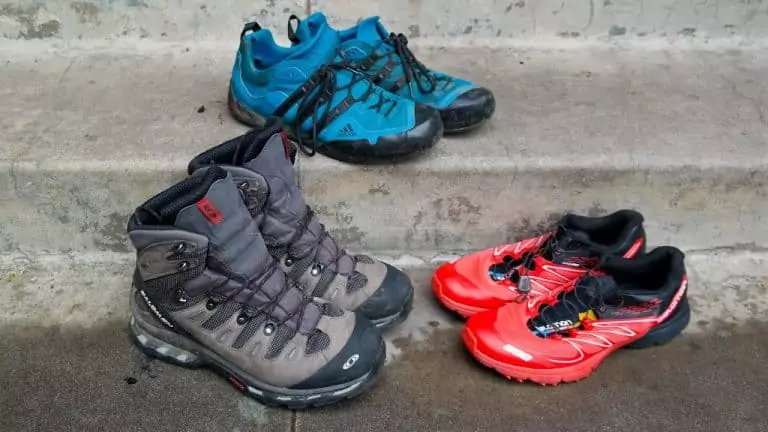
It is through these comparisons that you might be able to choose the best footwear for your hiking adventure. We personally cannot pick the right footwear model because it depends on personal preference. But we will make your choice easier if you keep on reading.
Comparisons of features between hiking shoes and the hiking boots
As introduced above, we will compare the comfort, protection, traction, waterproof, seasonality of use, weight, proper fit, breathability, and the type of terrain to be traversed using any of these foot-wears. For guidelines on how to choose hiking boots, see our article on this important topic.
Comfort
Due to the rigidity of these boots, and the sturdy coverings around the ankles, we doubt the excellence of this footwear in the provision of comfort. The comfort of the hiking boots may be determined by the flexibility and mobility of our feet. Unfortunately, this is something that is lacking in the boots because they are predominantly made of sturdy materials aimed at offering maximum protection.
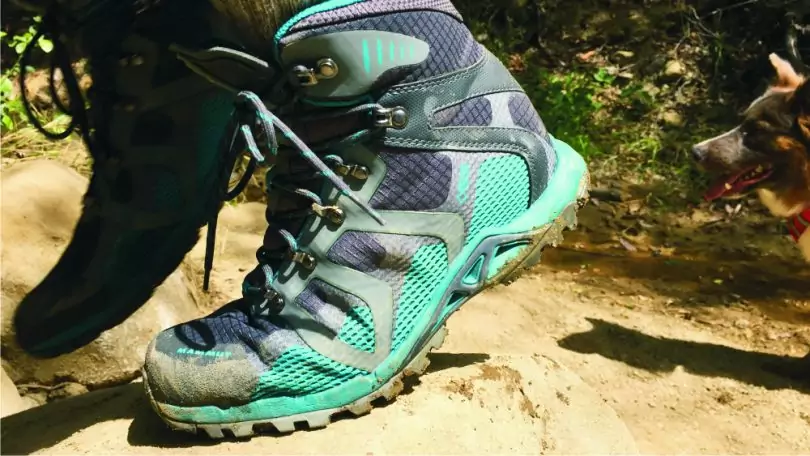
When wearing hiking boots, your feet or your toes may not wiggle enough. This in turn causes the discomfort to your feet, especially when traveling for hundreds of miles or when descending on steep terrains. As a result, you might be prompted to take infinite rests along the way to ease the restricted mobility of your feet. Having noted this, if your priority of buying the hiking footwear is comfort, then the hiking boots may not be the best choice for you. Read our review of outstanding minimalist hiking shoes for your needs.
It is without doubts that hiking shoes have a superior comfort over hiking boots. This is attributable to the soft and light materials used in handcrafting this footwear. For example, your toes and feet will have enough wiggle room when traveling for any length of the terrain. The comfort is measured by the extent of flexibility and mobility of your feet in the footwear. This is something not found in the hiking boots.
Moreover, the fact that hiking shoes are seldom over the ankle length makes them more comfortable. The ankle can move flexibly without any restriction, although it might be vulnerable to tree scratches when crossing over rough terrains. But provided you use this footwear on well-groomed trails, then you are guaranteed a great comfort compared to putting on mobility-restricted hiking boots. For the best hiking boots, see our previous article on this topic.
Protection
We have to give credit where is due. The hiking boots get a crown here in foot protection. Their sturdy and rigid designs provide maximum protection compared to the hiking boots. That noted, you can hike in rough terrains, on rocky mountains, or inclement weather conditions without any fear of exposing your feet to danger. The outer sole is also strong enough to not be exposed to sharp objects on your trails.
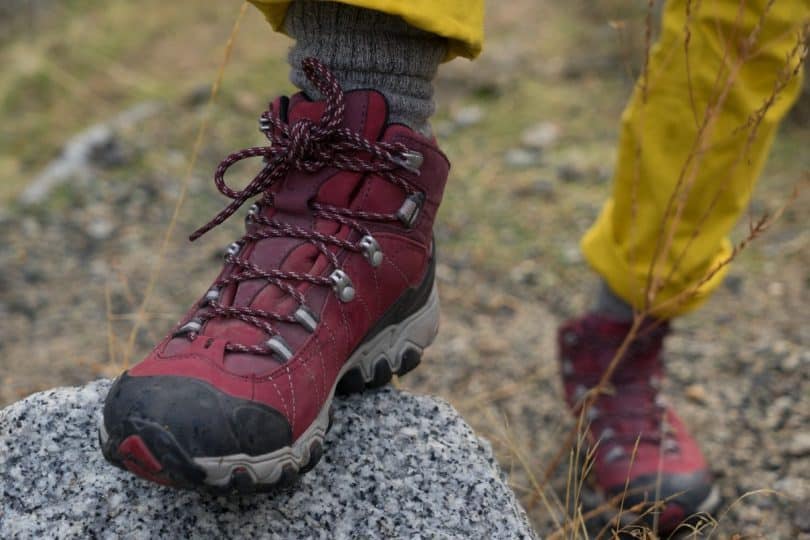
Quite often, leather, synthetic materials, and suede are used in designing these boots. They are not only strong, but warm too, to protect you against inclement temperatures, something that light shoes might not achieve to the fullest. So, to those hiking predominantly in the winter seasons and on rough mountains, hiking boots are your best companions for such pursuits.
These shoes might be lightweight and comfortable, but have inferior protection compared to hiking boots. They are made of light and soft materials, which excludes them for use on off-trails, and in winter’s harsh temperatures. But they can still be used in off-trails and harsh temperatures depending on the extent of such inconvenient conditions, because some materials can give a minimum protection even though not comparable to hiking boots.
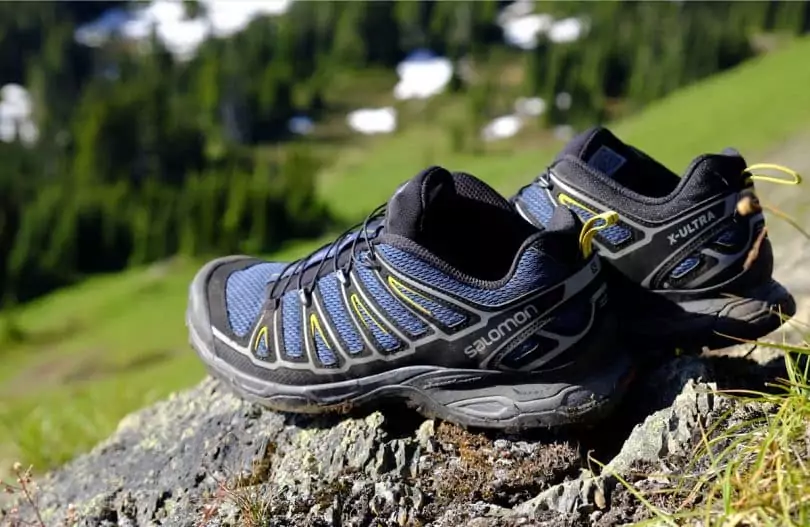
Because many hiking shoes seldom extend over the ankle length, the ankles may be vulnerable to injuries. If trekking over off-trails, you must be vigilant of small trees on the way to avoid scratches on your ankle, otherwise your hiking journey might be fruitless. Furthermore, the mesh patches designed for hiking shoes exposes them to the wrath of the inclement weather conditions. So, that being said, hiking shoes are not the best choices for foot protection.
Traction
What will be the point of hiking on slippery surfaces if your footwear has a poor traction? That will be compromising your safety because you can trip anytime. Imagine if that occurs in higher altitude mountains. It could be extremely treacherous. So, fortunately, hiking boots have lugged soles to offer a better traction compared to hiking shoes. Such traction strength can survive rocky surfaces or any downward slopes.
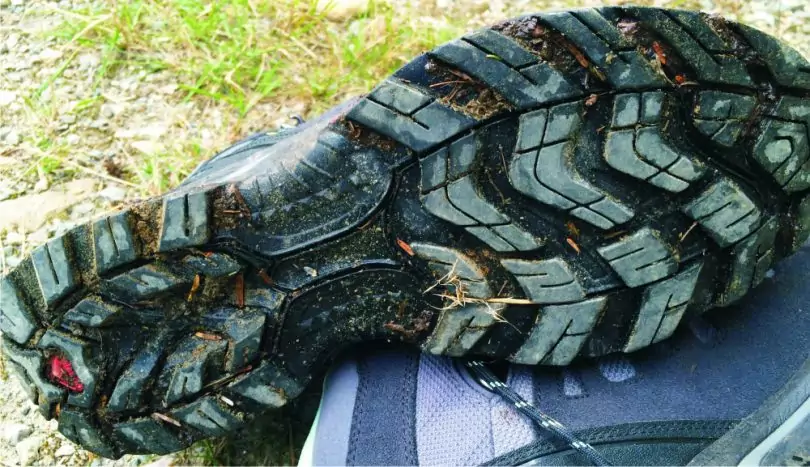
However, the fact that these boots have higher soles that take you off-the-ground, can be a drawback to your foot balance on slippery surfaces. But this can be avoided by reducing your speed when going down such surfaces.
These shoes also have a great deal of lugged soles for traction, but not as much as boots do. The boots have thick soles and this emerges as an advantage over the shoes in traction properties. With this minimal traction, you can hike on medium slippery surfaces without tripping to your injuries.
The traction differs from one sole material to the other. Other hiking shoes arguably provide the best traction that can be relative to hiking boots. Well, that depends on the thickness of the sole.

The thinner sole, however, has an advantage of traction on slippery because of a great balance. With thinner soles, our feet get more balance from the ground than when the soles are too thick as is the case with some boots. But still, in overall, boots have a great traction if you have planned to travel on such slippery terrains.
Waterproof
Most of the boots for hiking are said to be waterproof should you hike during downpours or step on snow. It is true because some are clothed with Durable Water Resistant (DWR) materials to repel water from soaking through the boots.
However, this waterproof feature has limitations should you get submerged in water for a long time or over the ankle length. Eventually, water drops may soak into your boots and dampen the inside. Moreover, the waterproof materials wear as time goes on. Then you must re-coat the boots.
Probably the worst experience of wearing hiking boots could be their drying time when you have been submerged in water. If you have one pair then that might be a messy day for you. It’s either you let them dry first, or you hike with heavy and dampened boots. All in all, regardless of the setbacks, boots have a great waterproof feature compared to shoes for hiking.
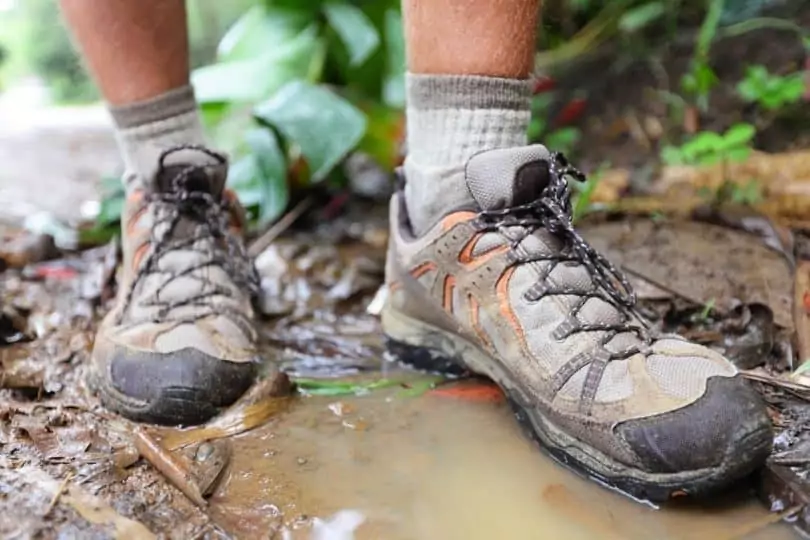
Shoes are also said to be waterproof, but inferior to the boots due to their mesh patches. Unless the shoes in question are not meant to be breathable, then they can be competitively waterproof. But that’s rare of course. So, if you are prioritizing waterproof, the hiking shoes may not be the best choice for your desire. Either way, these shoes are predominantly designed to be used in dry seasons where rainfalls are rare.
Even if these shoes can be submerged in water, they can dry fast due to their light weight materials. Firstly, they are breathable, meaning if the water soaks in it can be eliminated through the mesh designs.
It is therefore unlikely that your feet will remain sweaty for a long time. That’s where they beat the boots, because boots takes forever to dry out. So with these shoes you can travel with them while damp knowing that they can dry quickly. Check out our piece on the finest Gore-Tex hiking boots to see if it’s the best pair for your needs.
Weight
Weight is an important factor for hikers due to hiking gear that we are compelled to have when hiking for many days. So you wouldn’t want to travel for hundreds of miles with heavy gear and heavy boots. But then in reality, hiking boots are heavy compared to hiking shoes. Of course they are made of heavy materials and have thick soles. All these amounts to heavy weight that is made to provide a good foot protection.
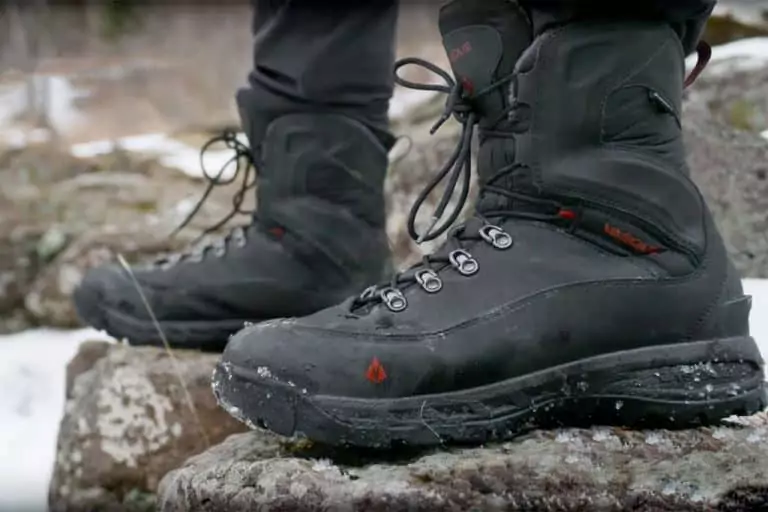
So, if you are an ultralight hiking enthusiast, hiking boots may not be the best footwear for your desire. On the other hand, if you plan to hike in the winter season, you have no choice but to tolerate the heavy weight of these boots since they provide a better foot protection in such seasons. In general, the boots are heavier than the shoes.
The hiking shoes are the popular choices for ultralight hiking devotees. They are certainly the winners when compared with the hiking boots. Soft and light materials are used in crafting these shoes. Moreover, the mesh patches add to the advantage of light weight.
So, you won’t expose your feet and your knees to an unbearable heavy weight notwithstanding the types of terrains your traverse on or the weight of your hiking gear you have. For hikers that are fond of running, shoes are the best choices due to their light weight.
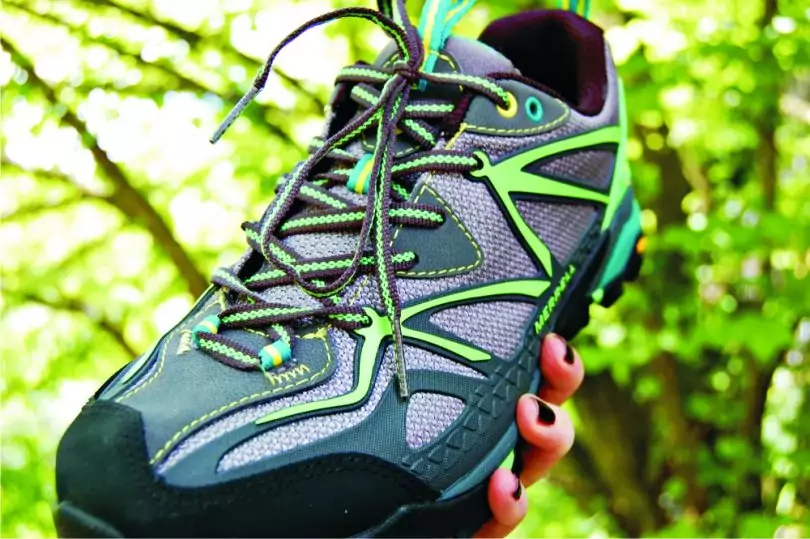
The other advantage of the shoes is the thin soles. They provide a lightweight sigh of relief to hikers. But then the disadvantage of the thin soles could be the sharp objects when hiking on off-trails depending on the material of the shoe. Nonetheless, hiking shoes are the best choices in terms of the light weight when using them in dry weather conditions.
Durability
With boots you can travel for thousands of miles without them wearing out because of the sturdy materials used in them. They have thick and lugged soles that can survive the rough surfaces, and thus last you for long.
Furthermore, off-trails are not the voids of durability for the shoes due to their rigors. So, if you want to save, hiking boots can be your good choice. You may travel thousands of miles without having to replace them. Their waterproofness also adds a significant value to durability.
It is undeniable that hiking shoes are not as durable as the boots. Their soft and light materials, as well as the lack of quality waterproof feature, are attributable to this void of durability, more especially when traveling on rough surfaces.
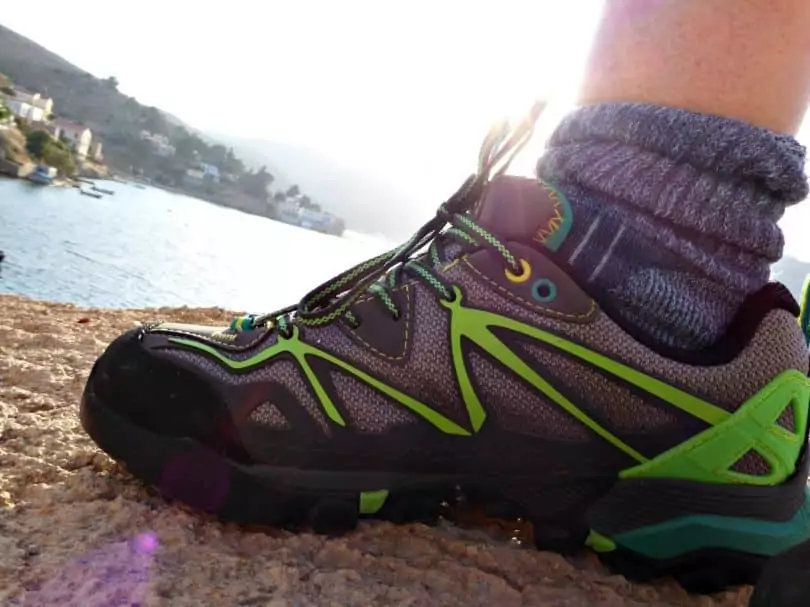
But if cared for, and used on even surfaces and well-established trails, they can last you for long. We encourage you to have at least two pairs when hiking for many days.
Proper fit
The hikers’ boots, in general, do not provide a proper fit straight from the box. Our advice is that, wear these boots a few weeks before heading out to your hiking excursions. You can wear them and take short walks to stretch them so that they fit well. Failure to prepare them for a proper fit may result in blisters on your feet and restricted mobility.
Your journey might turn out to be fruitless. This is because these boots are made of strong materials, so they are not easy to conform to your foot shape at first use.
Because of their soft materials, the shoes have an excellent proper fit directly from the box. There is no need to wear them and take numerous short walks before heading out to your trip.
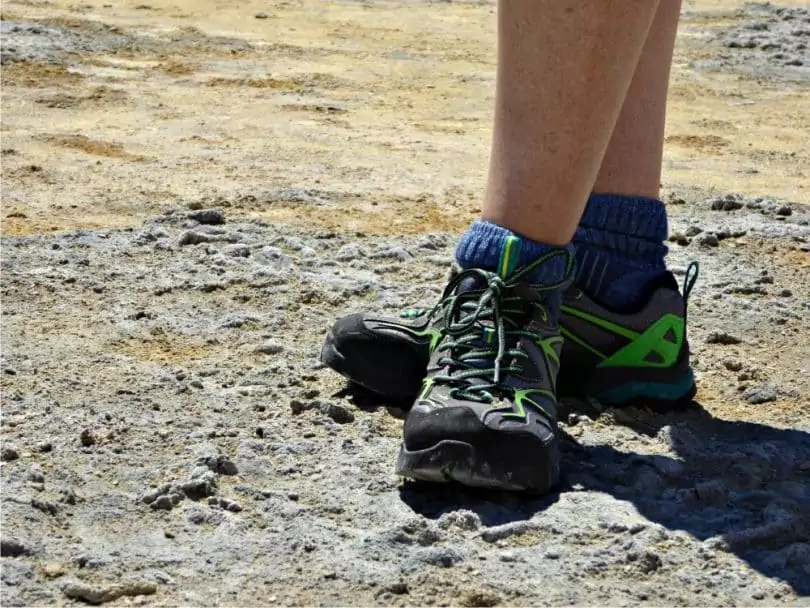
With this advantage, you can purchase a pair in a foreign country when you hike and fit it instantly without causing blisters on your foot. That’s the advantage of shoes over the sturdy hiking boots.
Season of use
You may have probably concluded in your mind, thus far, that which types of seasons to use these boots for. It is mainly in the winter that hiking boots play a significant role due to their warmth, foot protection, waterproof, and durability.
Winter season requires these kinds of footwear because light materials cannot withstand the coldness and ubiquitous downpours.
For the dry seasons, mainly spring and summer, hiking shoes are the relevant footwear to wear. They are light and breathable. They will therefore let enough air circulation to your feet, thus eliminating the moisture that could cause blisters to your feet.
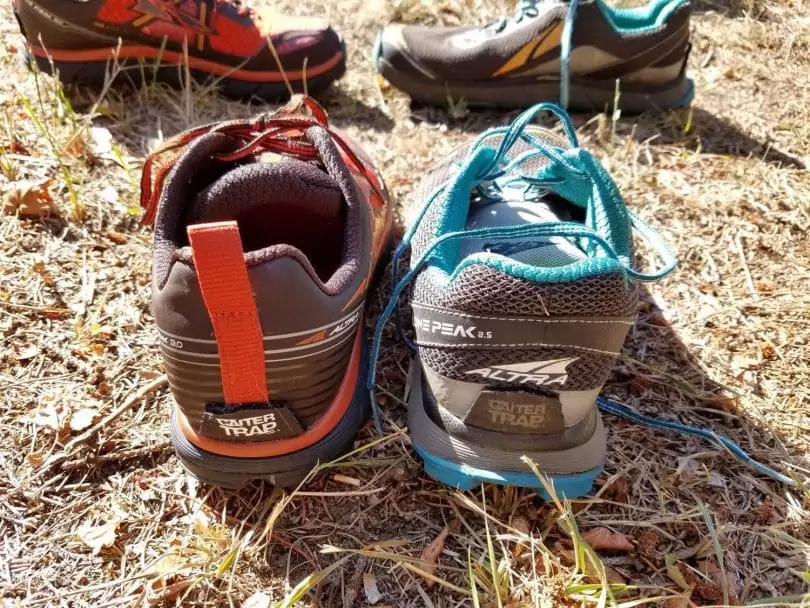
Furthermore, these shoes are less insulated, and this makes them preferable in dry seasons. Wearing hiking boots in hot days may prompt you to take them out whenever you rest so as to minimize the heat inside.
Breathability
It is very rare that you may find hiking boots with mesh vents. The main purpose of these footwear is to be well-insulated to provide an unparalleled warmth during inclement weather days. But, then that warmth may lead to sweaty foot and eventually lead to blisters on your softened foot.
Moreover, the ankle are often covered, and this further limits breathability of this footwear. This lack of breathability discredits the use of these boots in hot days or for longer times.
These are certainly the best choices with regard to breathability. Most are made of mesh patches to let enough air in or let moisture evaporate outside. By reducing moisture, they will be preventing the build-up of odor-causing bacteria in the boots.
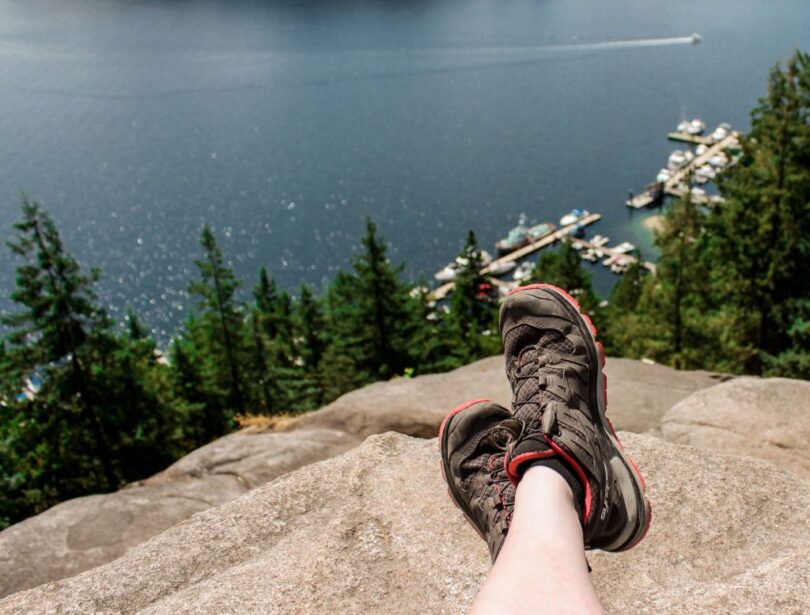
This will make sure that the shoes stay fresh no matter how long you have travelled. Furthermore, breathability prevents blisters on your foot because too much sweat soften the foot and eventually the foot, as in the hiking boots, may get blisters due to lack of flexibility of the footwear.
Types of terrains to hike on
This should be obvious when taking into account the types of materials and the thickness of the lugged sole. In a nutshell, rough surfaces, damped or snowy surfaces, steeper mountains, off-trails, and rocky terrains are the best matches for boots.
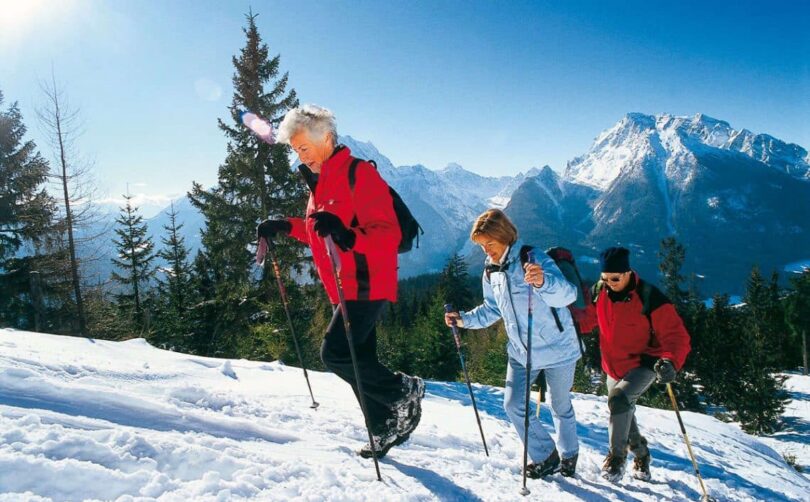
They will give you an unmatched protection than the shoes would. With the thick sole and a better traction, you are assured a cinch hike in almost all different terrains.
Due to the light and soft materials and a thin sole, you can hike on medium-rough surfaces on well-groomed trails. Too steep surfaces may be a challenge because of the substandard traction compared to the hiking boots.

It is also not preferable to walk on snowy areas for a long time unles you are definitely about the qualities of the shoes to withstand such conditions. And you should not submerge them into water.
Wrapping it up!
With the comparisons given above, we are confident that you are in a good position to choose the best hiking footwear. We are, however, not in any position to pick the best footwear for you because this is predominantly about personal preference.
You need to take into account, inter alia, the climate of your destination, types of terrains to travel on, the weight of your hiking gear in relation to your desired footwear, and many more.
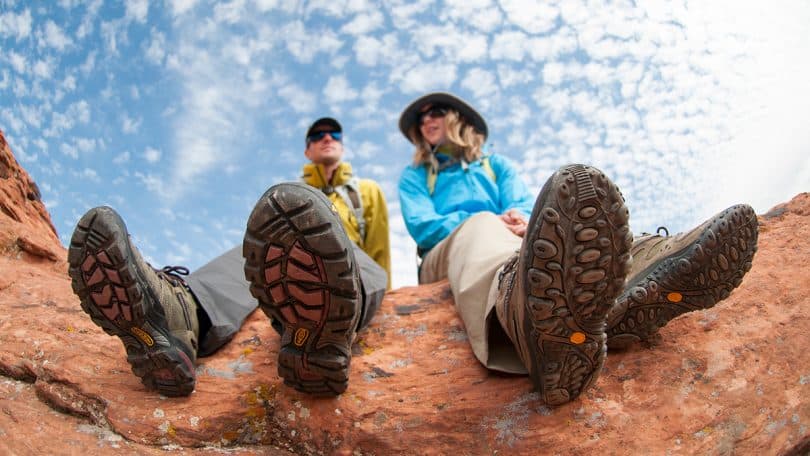
Just take time to research more about the weather fluctuations and prospects of the inclement climate in your favorite destinations for hiking. This will help refine your search for the relevant footwear needed. We have nonetheless done our best in discussing the features of paramount importance that can be used as criteria for evaluation in hiking footwear.
Do you have any questions? Please feel free to leave a comment in the comments section below.

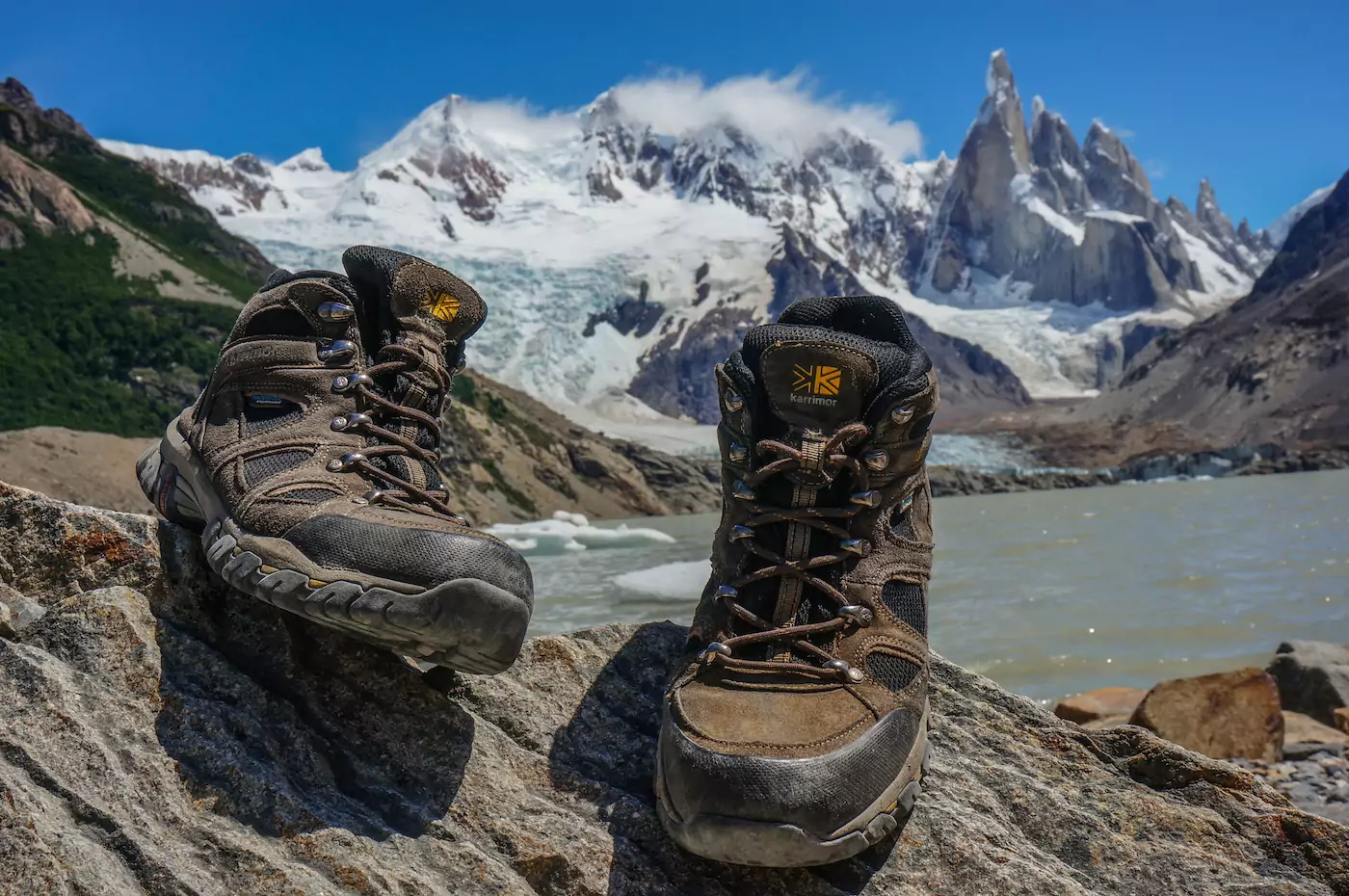






I think having both the hiking shoes and hiking boots is the way to go, then you can choose which ones to use depending on the weather or season that you are going hiking. I, personally, have several boots and hiking shoes and I find each one of them to be ideal for certain activities only, as opposed to others. For example, I can wear hiking shoes on a hot day and wear hiking boot when hiking in the cold mountains.
Great idea!
Hiking boots are my ideal shoes for any outdoor activity, be it fishing, jogging, walking or camping. That is because I think they cover my legs better than other shoes and support my ankles quite well throughout so I never have to worry about aches when I am done with my activity. I only need to buy one quality hiking boot to do all that.
We agree!
From my experience, I think the only huge difference between the hiking shoes and hiking boots is foot protection. That’s because the boots cover a larger part of the feet and therefore have better support for the ankles than shoes. Therefore, my choice depends on where and when I intend to go outdoors. For hikes in relatively unfamiliar grounds, I like to put on hiking boots but if it is a place that I frequent and know the terrain (like a forest or a park) I prefer hiking shoes.
Great thought!